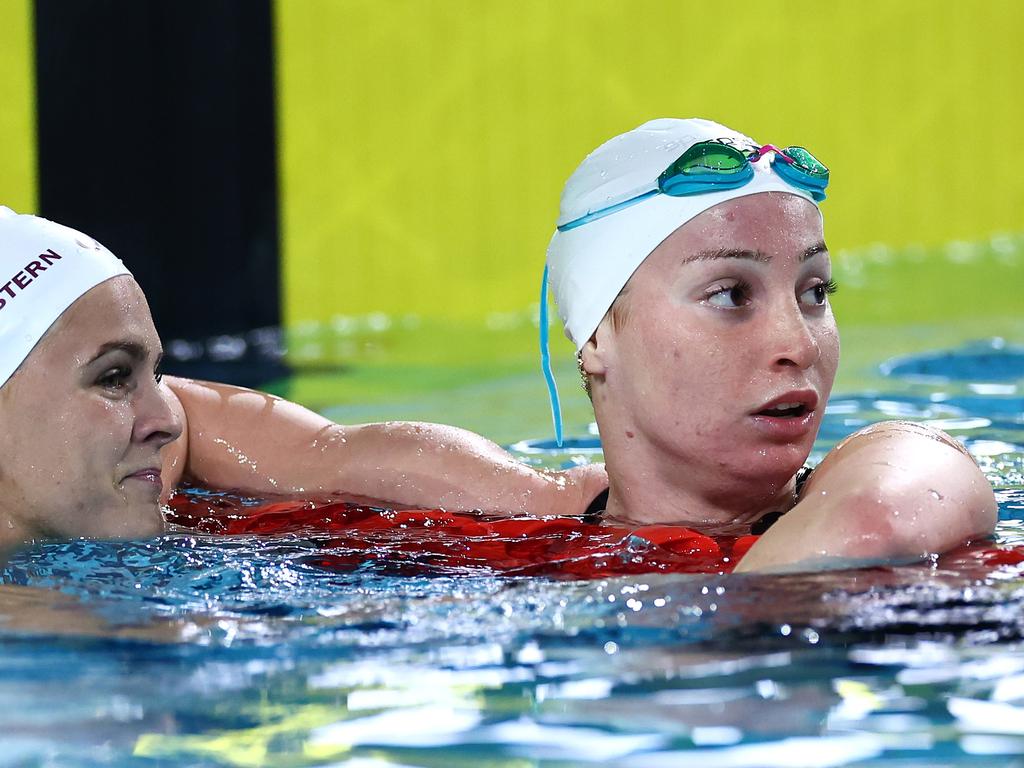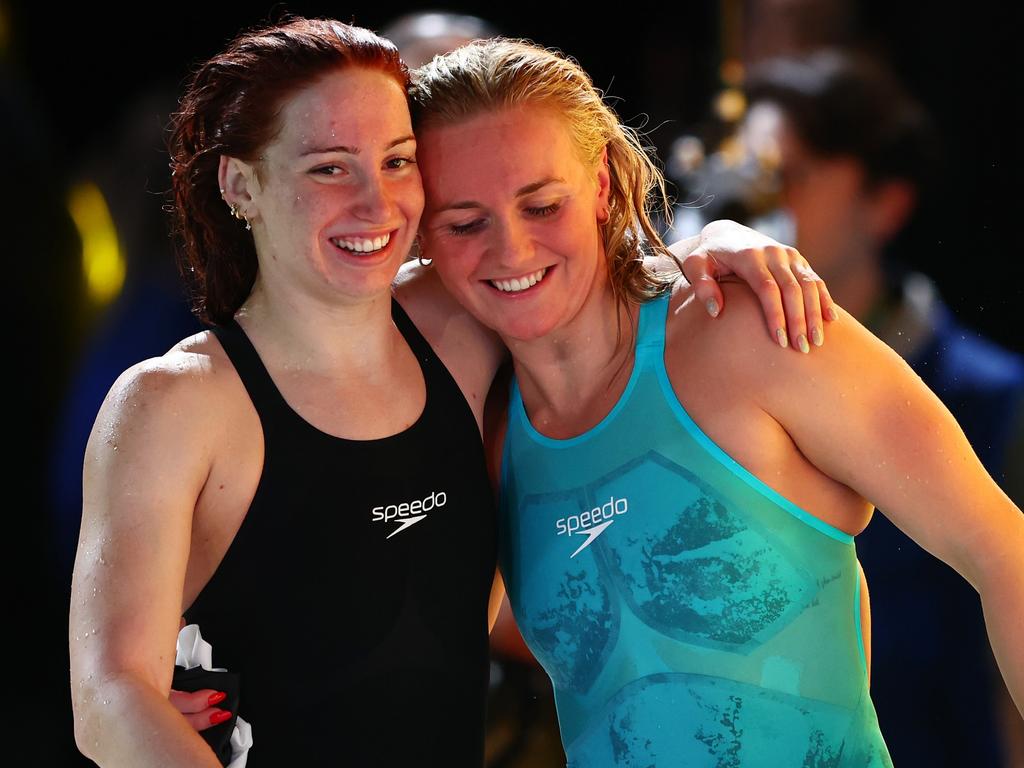
In Paris, the likes of Ariarne Titmus, Mollie O’Callaghan and Kaylee McKeown are set to dominate the pool and write another very golden chapter for this country’s female swimmers.
The women are the reason why, all going well at the Paris Olympics, Australia will maintain their ranking as one of the top-two swimming nations in the world.
At the last Olympics in Tokyo, the Australian team collected nine gold and 21 medals overall.
But what is a pass mark for this 41-strong team heading to France?
Some believe a pass would be maintaining this top-two spot as a force in the pool. What about beating the US swim team – on the gold medal tally at the least?
That would be a monumental feat if the Australians manage to tear down the US from their long-held No. 1 spot.
Australia last beat the US on the overall medal table at the Melbourne 1956 Olympics. It’s the only time Australia has beaten them. It is, however, important to note Australia had a home pool advantage and there weren’t as many races.
Yet this team is dreaming big.
Australian swim team head coach Rohan Taylor thinks this group of athletes can really take it up to the Americans in Paris.
“This team is going to give it a good shake,” Taylor said at the weekend. “But the Americans, there´s a reason they haven´t been beaten since 1956 – they´re just extremely competent when it comes to the Olympics. This is where they step up.
“They have got the depth, they´ve got the numbers, they´ve got the experience.
“We´re going to go there and do everything we can to create an environment for these (Australian) athletes, first and foremost, to do their best.”
There is an understanding that if Australia was to medal in all seven relays, it would be a phenomenal result.
For that to happen, the men are going to have to lift their game.
You have to go all the way back to the Athens Olympics in 2004, when Grant Hackett and Thorpe were scooping gold, to think of an era when the men were consistent winners in the Olympic pool.
No Australian man won gold in 2008 or 2012. Over the past four Olympic Games, Australian men have returned just three gold medals. Freestyler Kyle Chalmers picked up gold in the 100m freestyle at the Rio Olympics in 2016, as did Mack Horton in 400m freestyle. Zac Stubblety-Cook was our lone gold medal winner in the 200m breaststroke in Tokyo.
While world champions Chalmers and Sam Short were both out of sorts with sickness and injury at last week’s swimming trials in Brisbane, they could be in the mix for medals in Paris. Apart from Cameron McEvoy – world No. 1 in the men’s 50m – it was the women who produced the world-class performances in Brisbane.

At Tokyo 2020, McKeon won four gold medals, including the 50m freestyle, 100m freestyle, and relay victories in the 4x100m free (including breaking a world record) and women’s 4x100m medley relay.
McKeon is the most decorated Australian in Olympic history. This time round, the likes of McKeown and O’Callaghan have the potential to haul in even more gold than McKeon.
One of the signs that the women’s team is stronger than ever is the fact Olympic golden girl Cate Campbell couldn’t make the team in the relays, and the fact McKeon, who won the 50/100m golden double in Tokyo, could not qualify for either event for Paris.
As Olympic champion Libby Trickett recently told The Australian, this women’s team was the “greatest”. We are swimming in our “most golden era” of all the eras, she added.
“I think this is the period of time for women’s swimming in Australia …we’ve had multiple golden periods, but I think this surpasses it all,” Trickett said.
Australian swimming great Ian Thorpe said on Saturday this team on the whole was shaping up as the greatest Australian Olympic swimming team in history.
Time will tell if Australia can do what it hasn’t done since 1956 and finally tear down the Americans from their No. 1 spot.
And the heavy lifting for that task will rest on the women’s shoulders.








Australia has the best women’s swim team in the world.